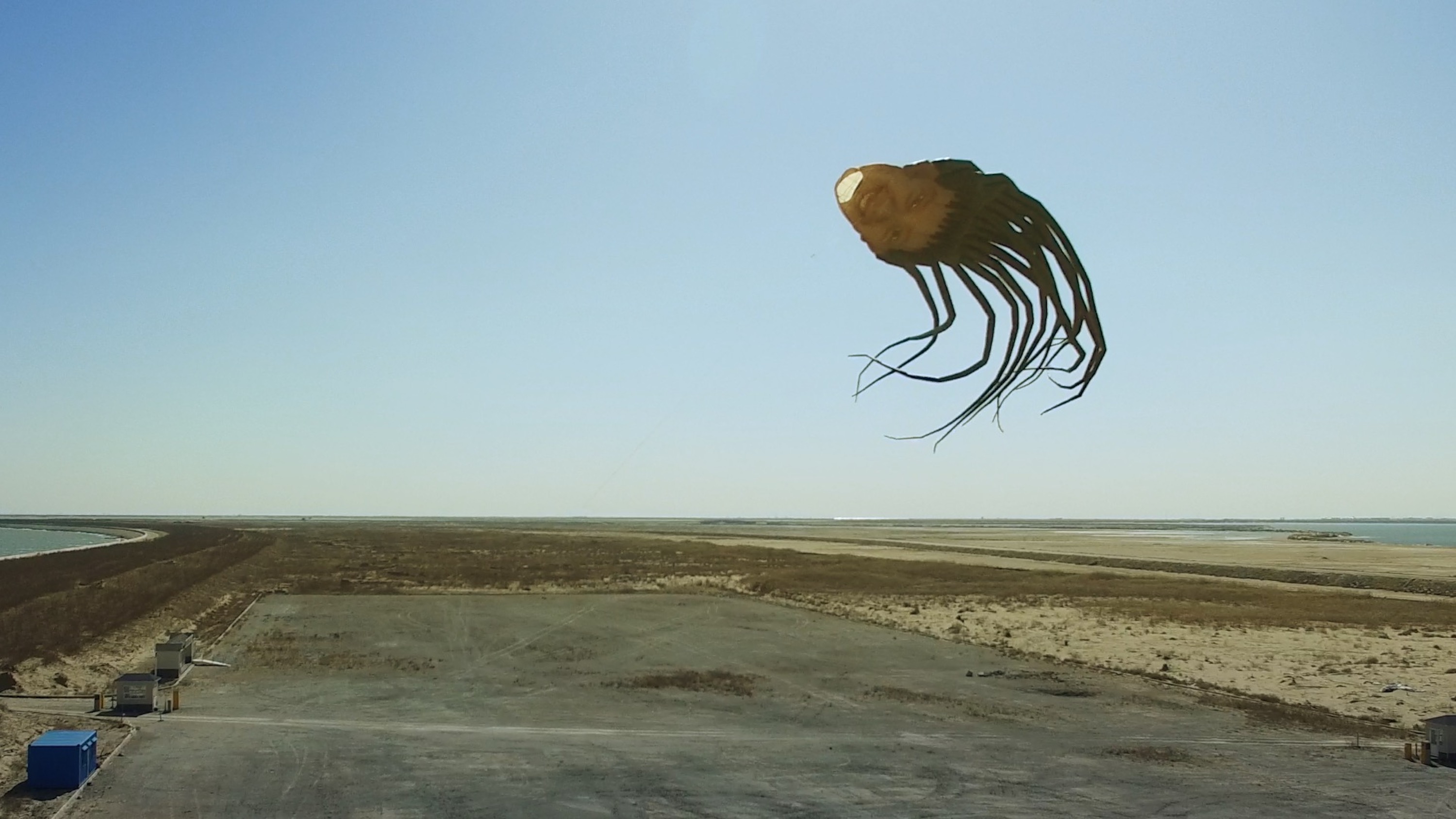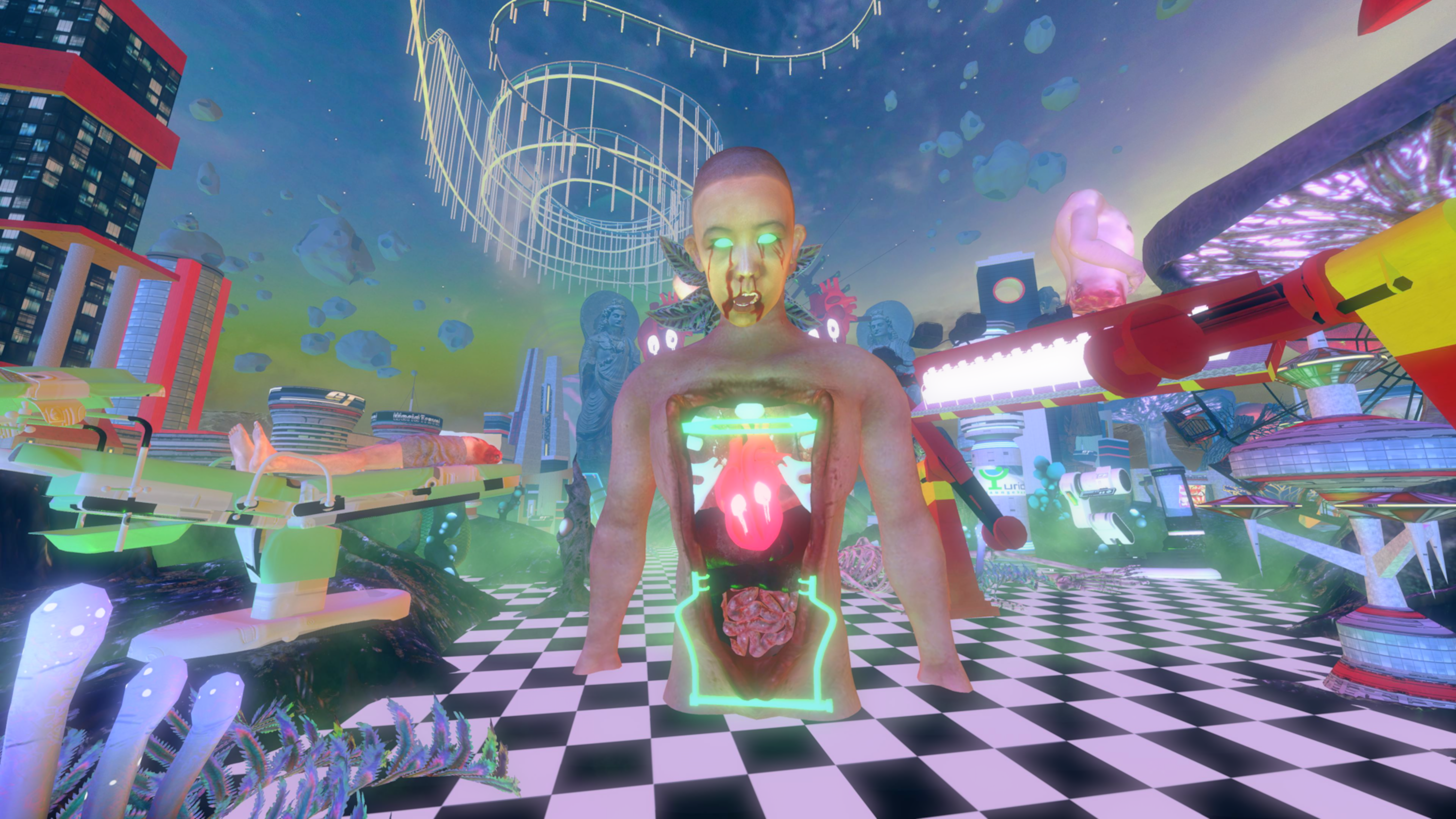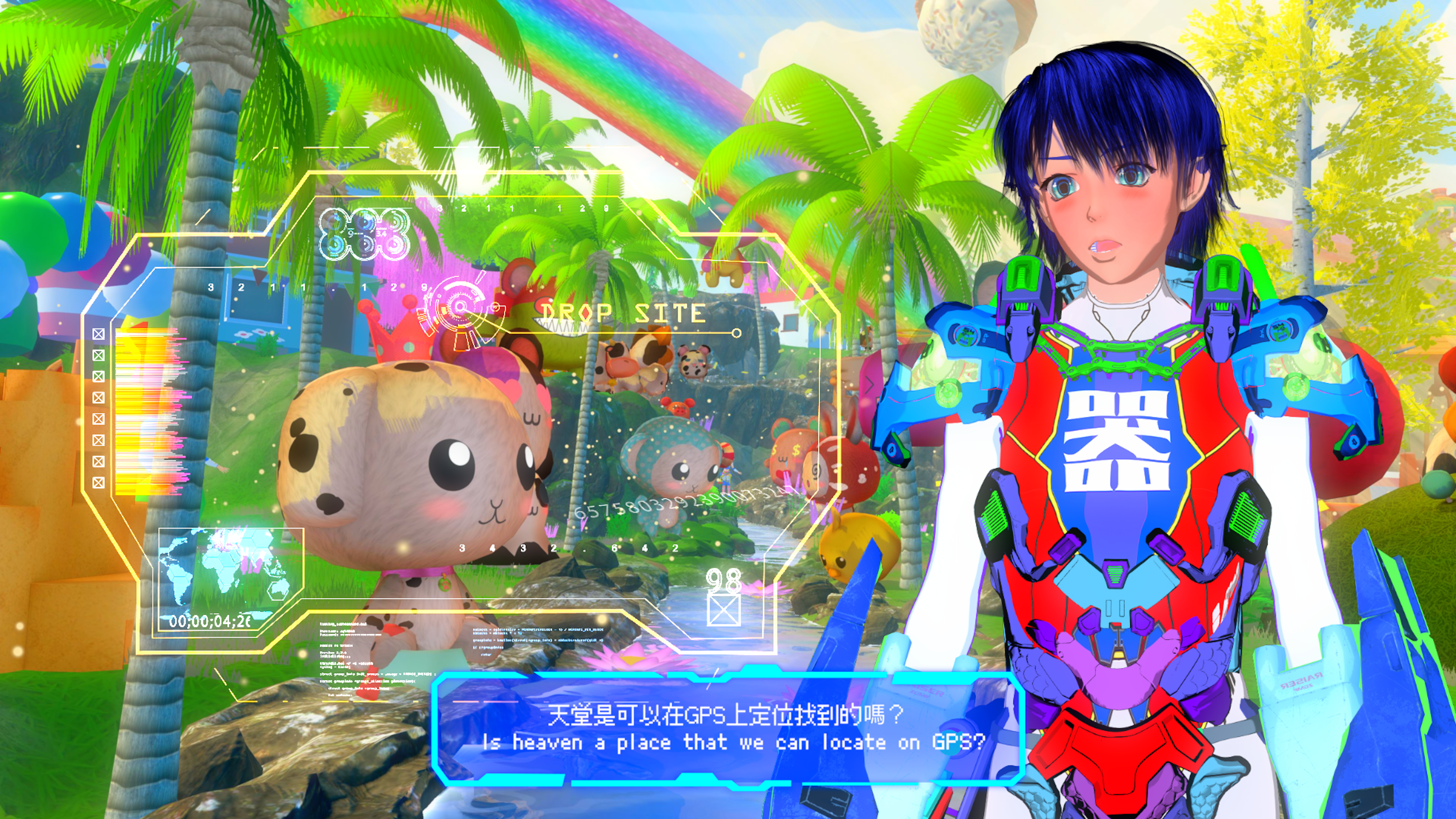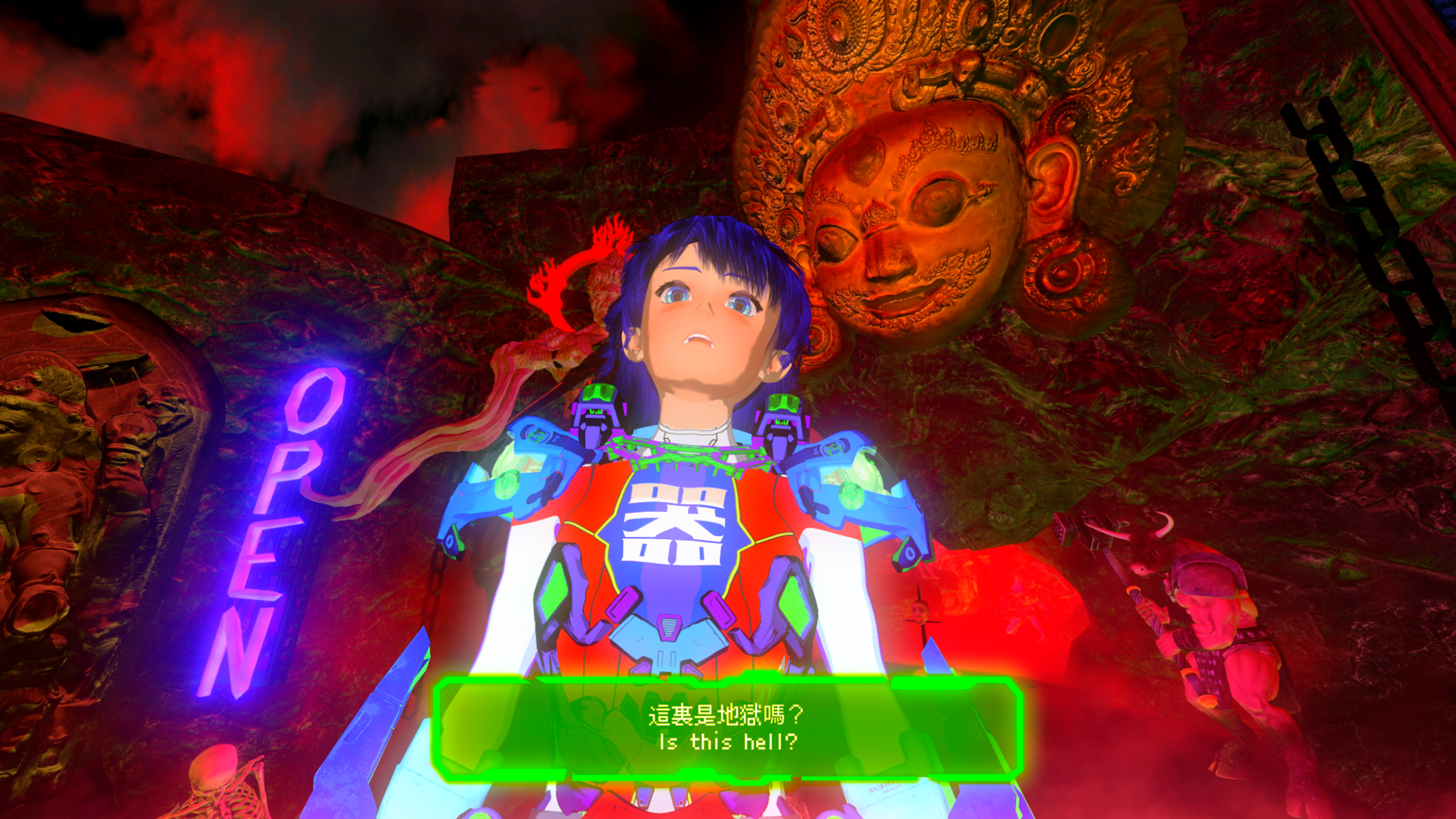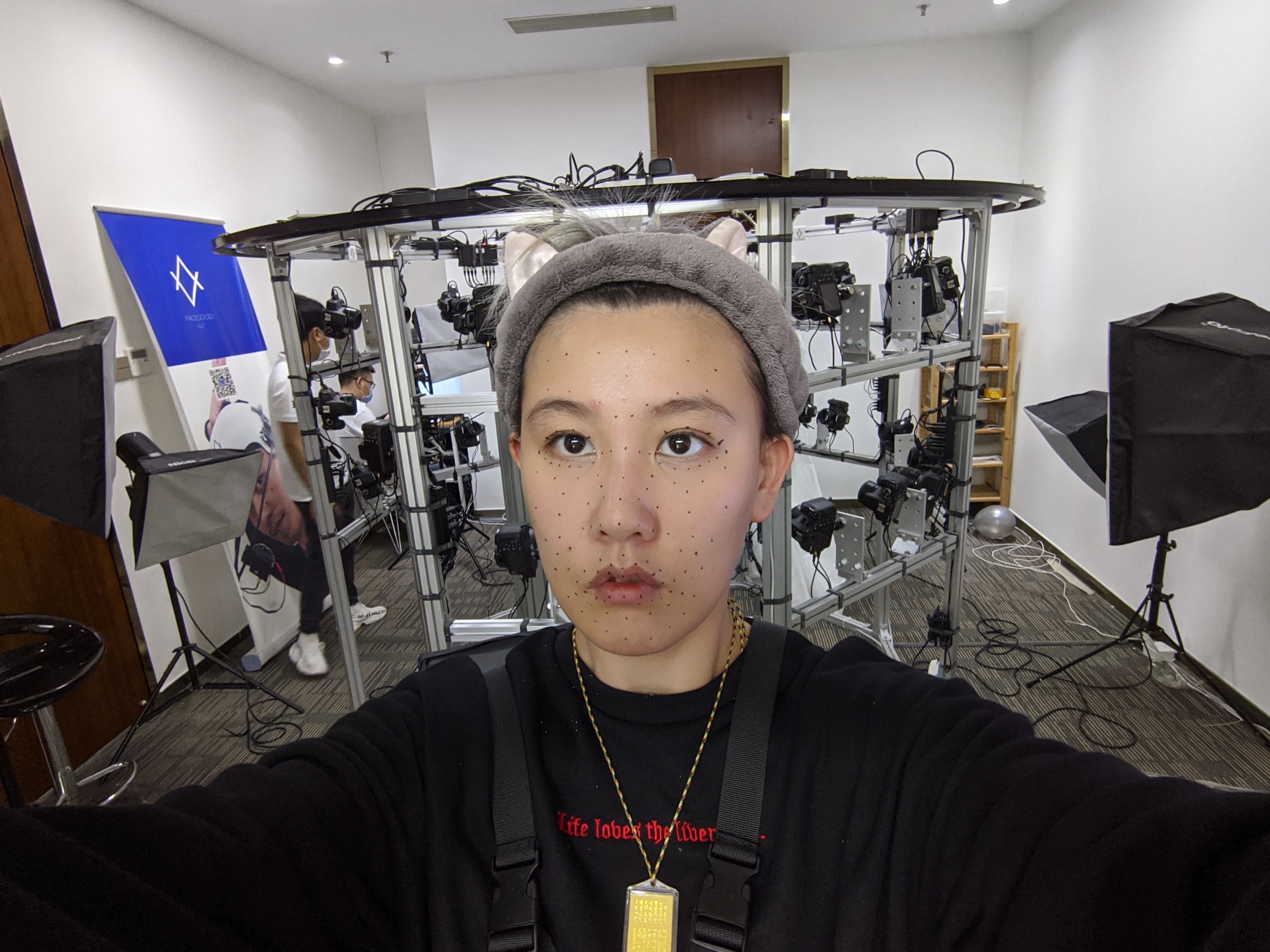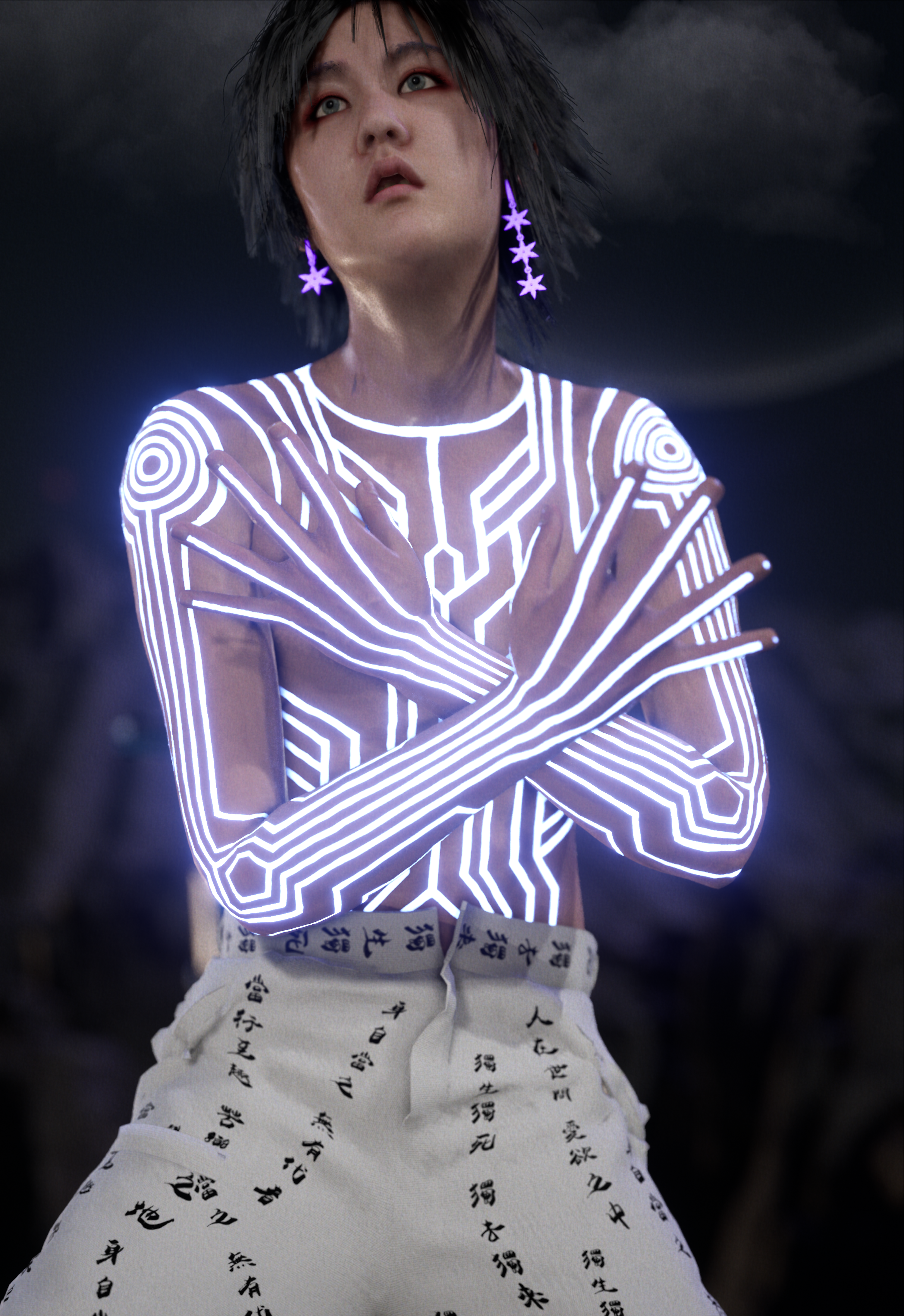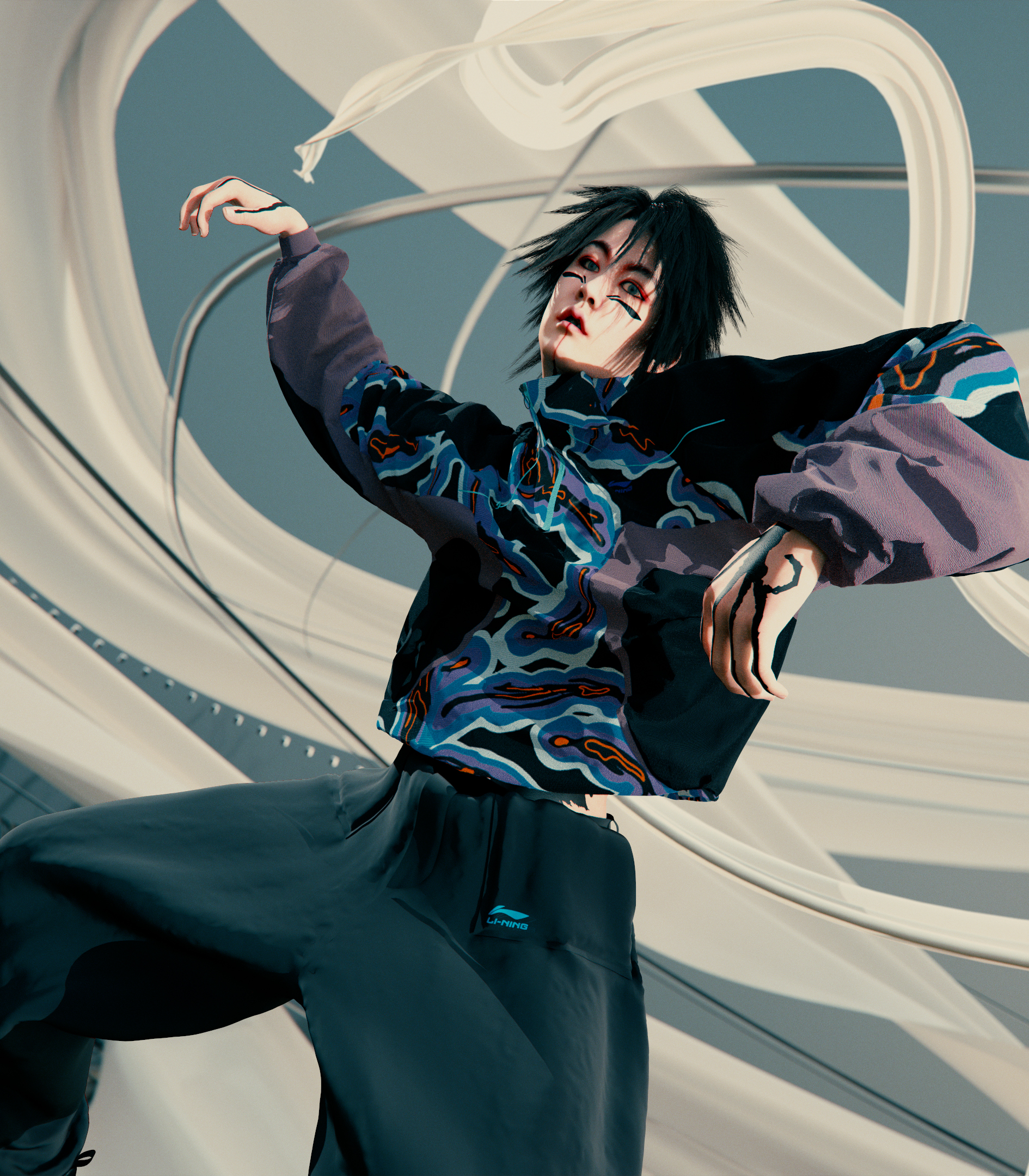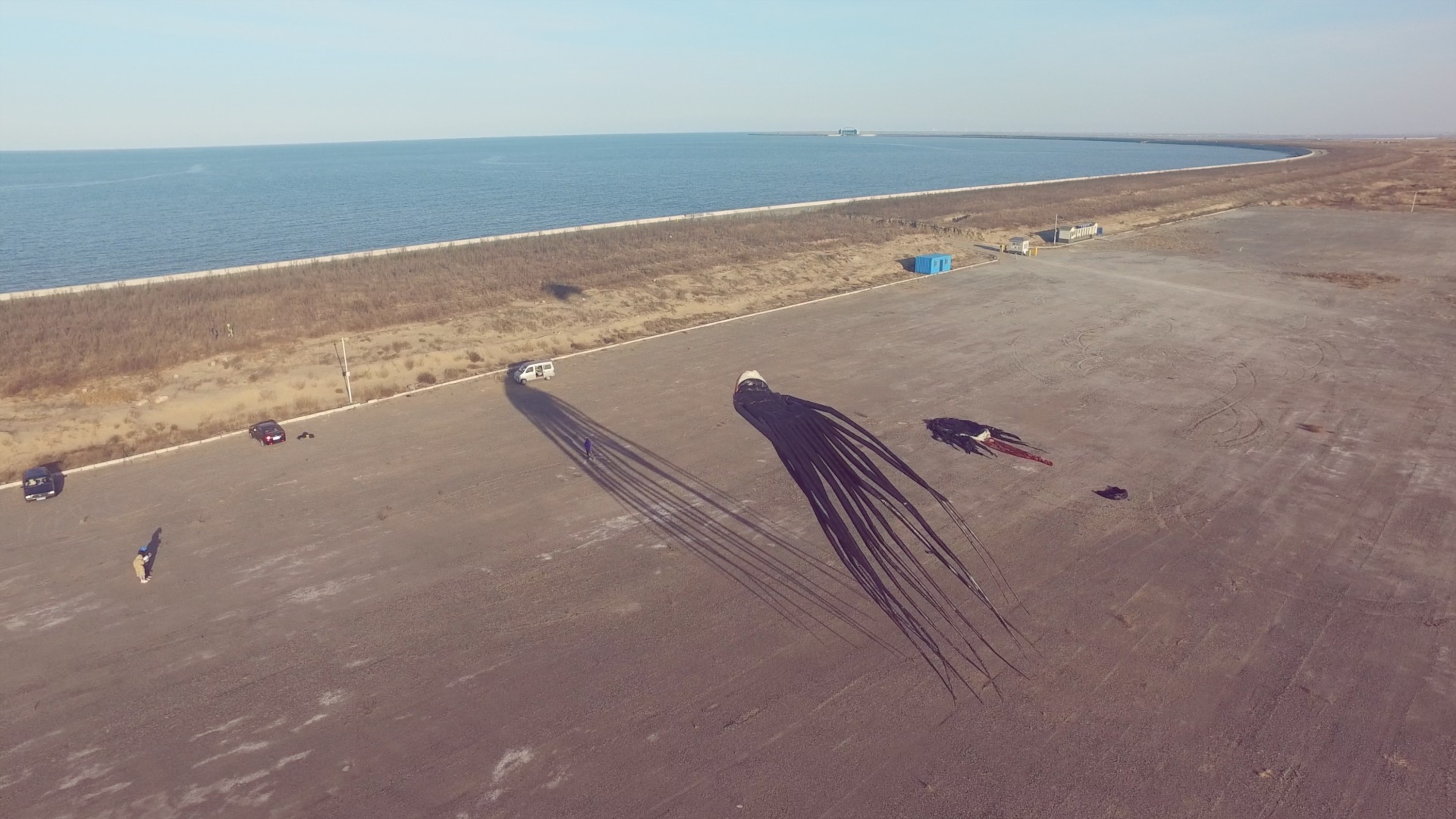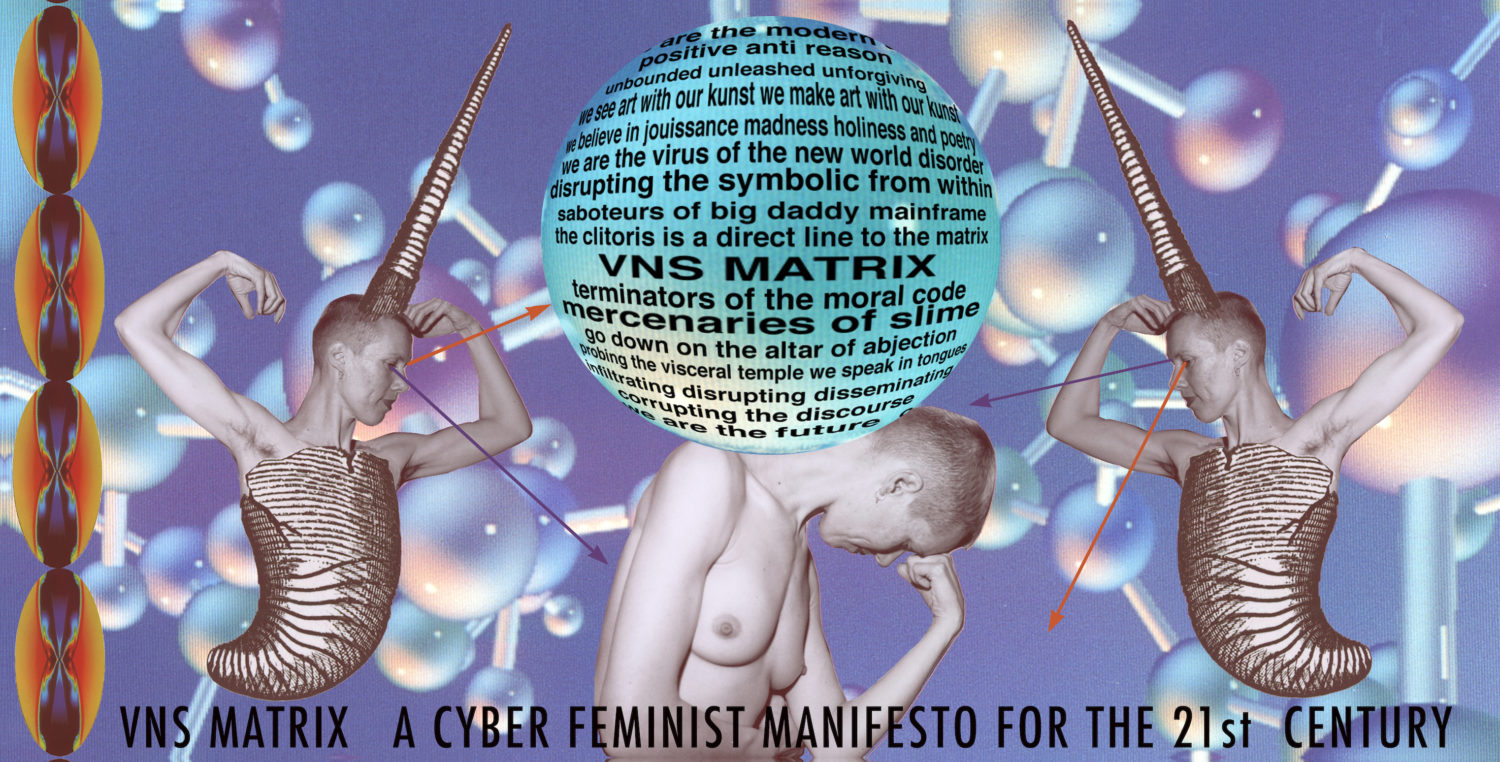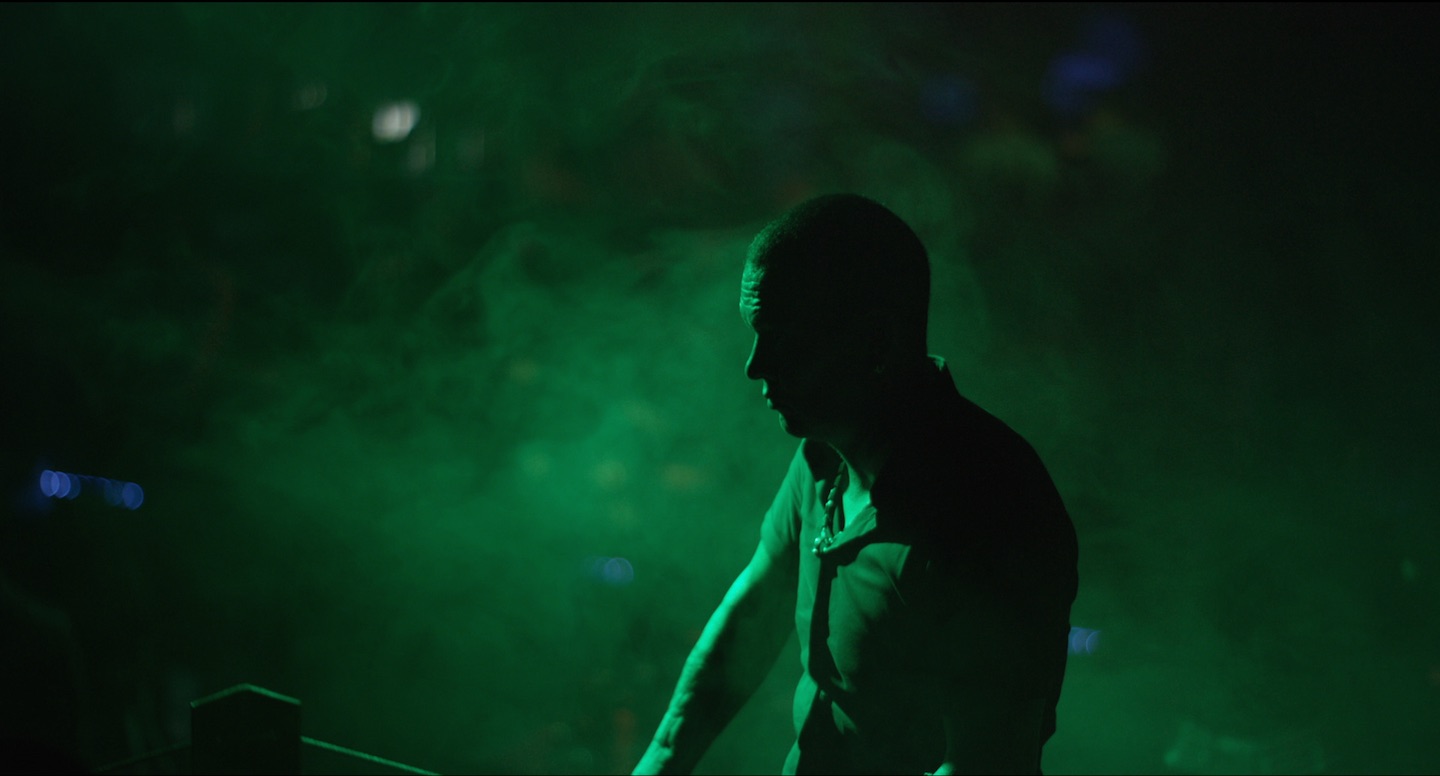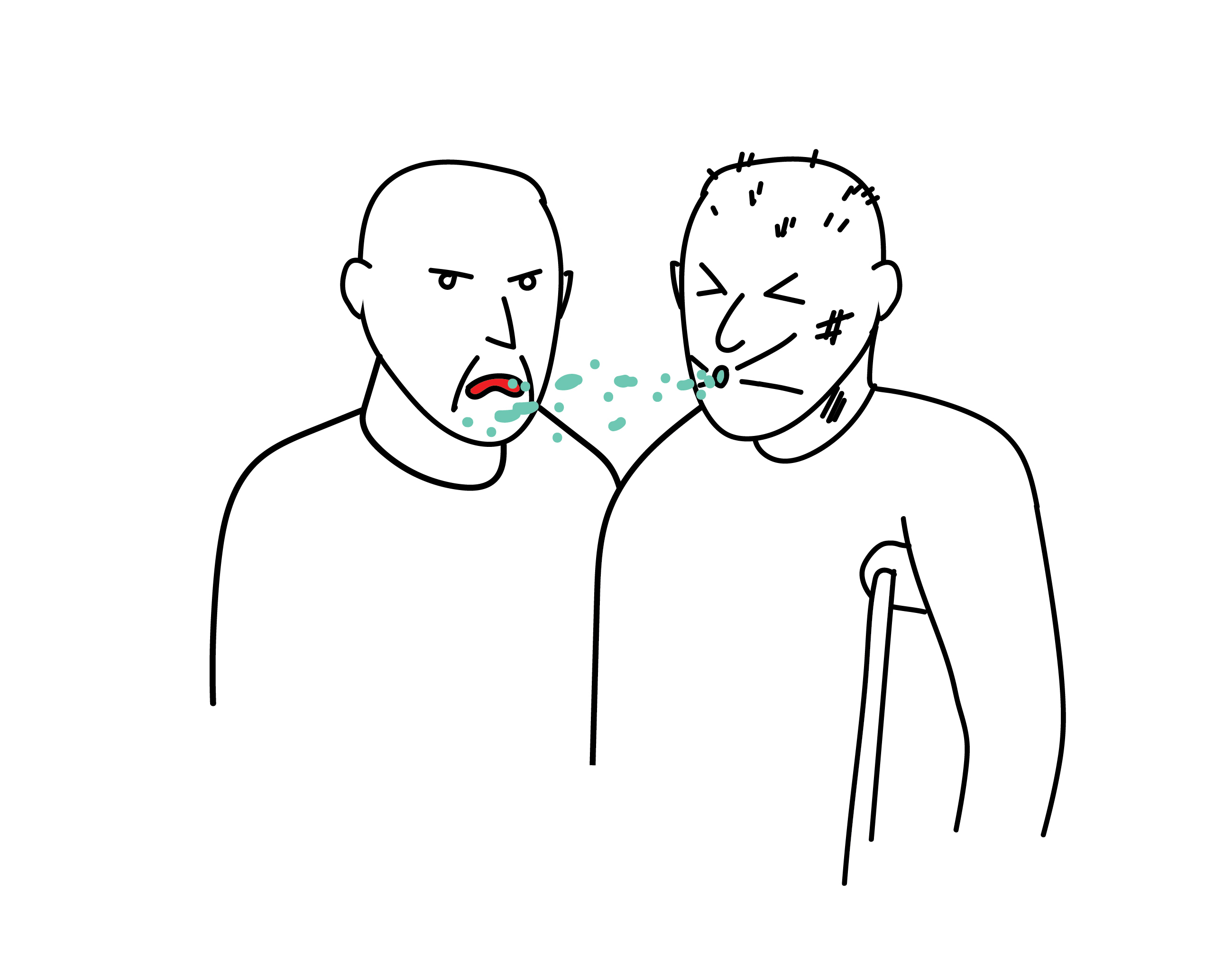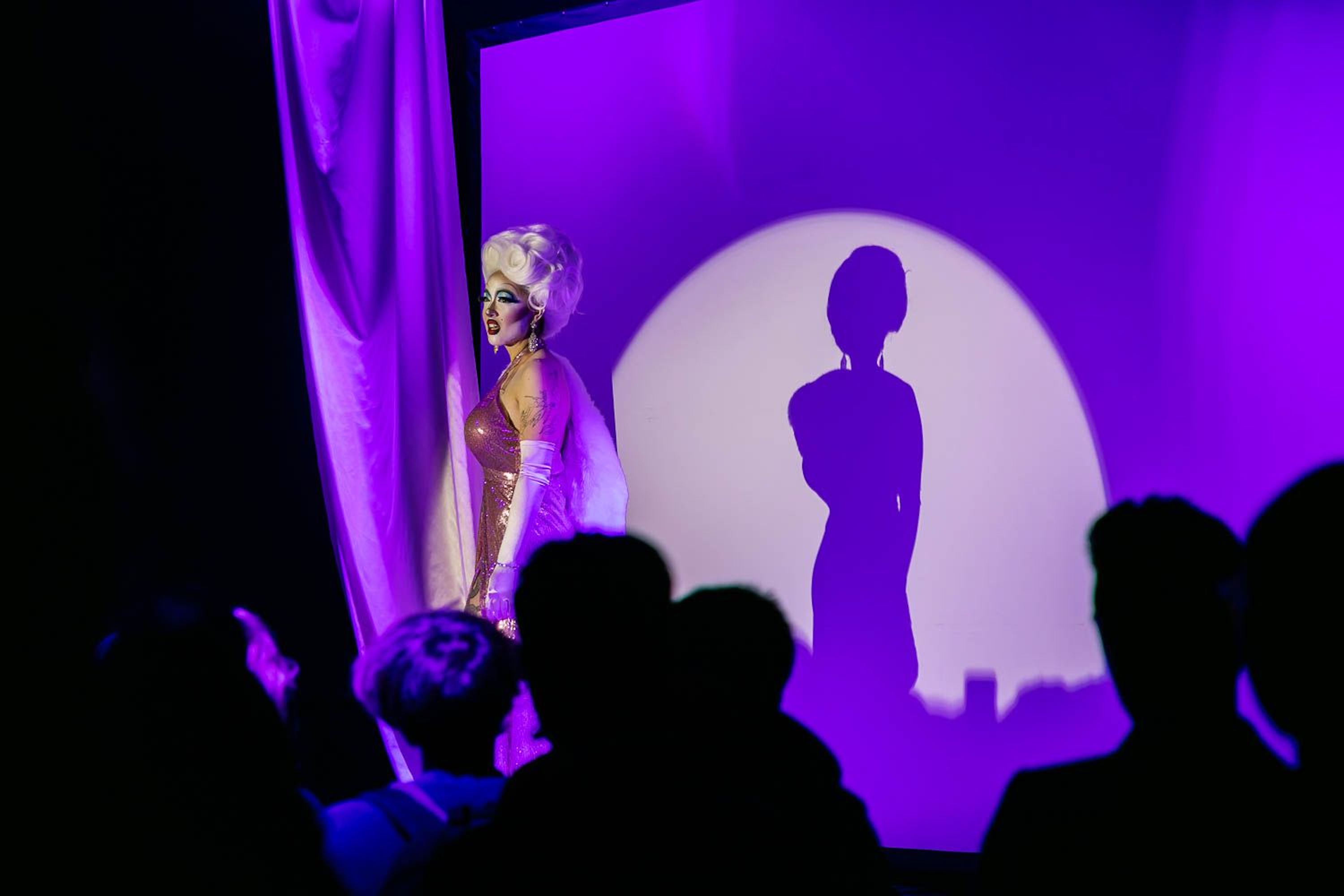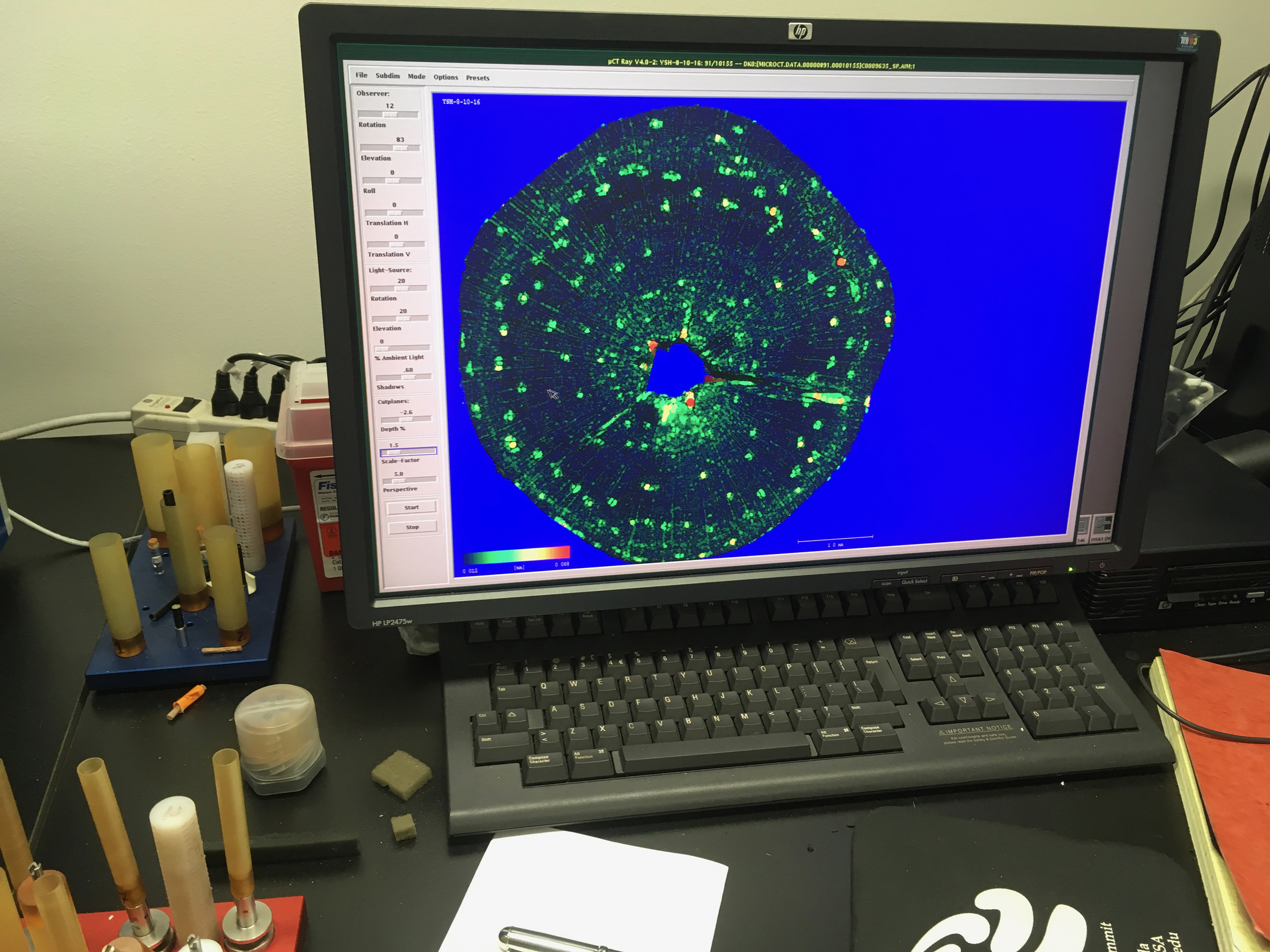The practice of Shanghai-based artist Lu Yang is best characterized as a continuous project of world-building. His videos, computer games, and digital avatars combine a distinctive repertoire of intellectual traditions and cultural references1: Buddhist and Hindu cosmology (as touched on in the 2015 video Moving Gods, exhibited in the China Pavilion at that year’s Venice Biennale), anime and gaming subcultures, neuroscience, and bio-technology. The artist combined these subjects into a delirious multi-chapter video game The Great Adventure of Material World, which featured in the 2018 Shanghai Biennial as part of a massive installation resembling an arcade hall. In the game, players control the Material World Knight through realms such as Hell, Paradise, Space Journey, and Fight with the Self. Among the characters from the artist’s earlier works to make a cameo was Uterus Man—an androgynous character with superpowers tied to the female reproductive system, who first appeared in a 2013 video—and the eponymous protagonist of Wrathful King Kong Core (2011), a Tibetan Buddhist deity whose fearful expressions draw on religion and neurology. Lu’s work is at its most radical when it addresses fundamental issues: life, death, and the (un)knowability of the self.
In Lu’s new project DOKU (2020–ongoing), the artist takes advantage of the latest 3D-scanning, motion capture, and digital modeling technologies to create a non-binary digital avatar that places the artist’s facial features on a lean, conventionally masculine body. As a digital being and the artist’s alter ego, DOKU functions as an experimental site for collaborations. Sporting neon tattoos resembling electrical circuits created by the Japanese artist Taku Oshima, it performs in the British band The 1975’s music video “Playing on my Mind,” or modeling for the popular Chinese fashion brand Li Ning.2 In this interview, the artist delves into his evolving perspectives on life and death, virtuality and corporeality, machine and perception, as well as the implications of the Covid-19 pandemic on digital art, being, and afterlife.
Xin Wang: DOKU, and the collaborations it has engendered, has so far appeared on digital platforms. How do you think of this work in relation to traditional art institutions and spaces?
Lu Yang: I don’t think of DOKU as a “contemporary art” project, nor does it circulate well in that ecology. I see it as a commercial franchise; an “IP” (or “intellectual property”, frequently designated to characterize creative content and franchises in Chinese pop culture and the entertainment industry). It is part of my recent series “Digital Reincarnations,” which projected a lot of my dissatisfactions with my body, and allowed me to create a perfect self-image.
XW: Digital reincarnation and surrogacy have been extensively explored in recent culture. There’s “USS Callister,” the 2017 episode of Black Mirror in which sentient copies of human players struggle to survive and break free from a virtual gaming world, and Sword Art Online, the anime series you often rave about, which features a full-on neurological immersion into a precarious gameplay with real corporeal consequences.
LY: The premise of Sword Art Online is very familiar to gamers. It’s perfect for a hardcore anime otaku such as myself, who dreams of abandoning the corporeal and imagines having full-fledged function and agency through a “full dive” neurological immersion in a virtual system. It also belongs to this genre of “heroes saving beauties,” which resonates with my desire to be a beauty-saving hero.
XW: What is “beauty” to you in this context?
LY: I don’t think it’s anything specific or even figurative. It’s more akin to a belief that inspires perseverance. Simply put, your search for truth may be embodied as a quest for “beauty” in a game. The seventh-century Buddhist monk Xuanzang, whose pilgrimage to India led him through deserts and monsters (and whose story was immortalized in literature and folklores), was determined to arrive at such truth—in the form of authentic, Sanskrit Buddhist scriptures. Another important moral from Xuanzang’s story was the solitary nature of his journey—he had disciples and other random facilitators, but ultimately only had himself to rely on. My character DOKU, whose Chinese name connotes “born alone and dies alone,” also encapsulates this sense of a lone adventurer through life, which resembles a gaming character as well.
XW: This reminds me of something that you mentioned during an earlier conversation between us: that “games are essentially worldviews.” What are some of the “worldview” premises you’d like to see implemented, given your own interest and continued engagement with creating games?
LY: I imagine my worlds to be open-ended, non-binary, and multi-dimensional. The Heart Sutra (c. 661 CE), for instance, tells us that “there are no eyes, no ears, no nose, no tongue, no body, no mind. There is no seeing, no hearing, no smelling, no tasting, no touching, no imagining. There is nothing seen, nor heard, nor smelled, nor tasted, nor touched, nor imagined.” Which is to say that nothing could limit your thought or perception of the phenomenal world if you didn’t set limits yourself. Buddhism is rich in philosophical concepts such as “the 32 major characteristics of the Buddha,” which, if taken literally, render an impossible being. These characteristics include “tongue long and broad,” “fleshy protuberance on the crown of the head,” “thousand-spoked wheel sign on feet,” knotted collarbones, and hands reaching below the knees. Can you imagine what a person who satisfies all these characteristics would look like? The idea of the “32 Characteristics” is to destroy your (preconceived) image, because that image is unattainable.
XW: Your 2019 video game The Great Adventure of Material World has a Buddhist premise: players navigate a mecha-like avatar through different cosmic realms populated with attendant spectacles and creatures that range from perverse cuteness to grotesque gravitas.
LY: The Great Adventure was rooted in the concept of samsara, or reincarnation through the six realms. My new game, by contrast, might have something in common with the Netflix animation The Midnight Gospel, which to me is almost a work of Buddhist propaganda. In the first episode, the protagonist arrives in a zombie-ridden country, but instead of surviving and killing zombies, he discovers a beautiful new world upon being bitten. Which is to say that how zombies experience the world is radically different.
This was exactly what “The Debate on the Joy of Fish,” in the ancient Taoist text Zhuangzi, was about: “If you are not a fish, how do you know what constitutes the happiness of fishes?” The fifth episode moved me to tears; the core concept was empathy and the amount of suffering required to achieve it. Every time the characters in this episode die, their hearts are carved out to weigh against a feather, like how the Egyptians evaluate the soul of the dead, and they would be sent back to hell if the heart remained heavier. The feather only becomes heavier than a heart that has suffered enough to gain true empathy. Buddhism also has this teaching that one has to trudge through an ocean of one’s own tears and climb a mountain of one’s own corpses to realize the suffering of all beings. At the same time, we might feel that life and suffering are both infinitely long, but from a cosmic perspective, everything happens in an instant; salvation could arrive at any moment.
XW: Buddhism, ironically, is usually evoked in an orientalist, (self-)exoticizing, or California Zen–type context in contemporary art, and is too often linked to minimalist aesthetics and identitarian performances.
LY: For me, artworks must be thorny, or have a pricking point. The internet has lots of capable content creators, and things get tired quickly. However, if there are many such pricking points in your core concept, people might still want to savor them hundreds of years later, as we continue to be inspired by ancient philosophical and religious ideas.
XW: Can you talk about your collaboration with the British band The 1975, who have commissioned DOKU to star in the music video of “Playing on my Mind”?
LY: They approached me with a song they believed was a good fit for me. I decided to create something stylistically similar to the Final Fantasy video game franchise. When I played the game, its lyrical soundtrack left an impression, and its main characters resemble DOKU—young, Asian, pretty-boy. I was working with a Shenzhen-based company specializing in facial motion capture. The singing expressions and sequences were fully motion-captured for the music video, whereas many virtual idols have static or rigid faces. We wanted to foreground this technology: the background is expansive, lonesome, and reminiscent of outer space.
XW: Your video Gong Tau Kite (2016) also had a romantic and lyrical soundtrack.
LY: The imagery of the work was quite evil-looking, but it was romantic because it was connected to my adolescent dreams. I was rather rebellious, with self-harming tendencies so extreme that I often dreamed of floating in the sky, posthumously, and looking down at the world from above. DOKU is a similarly lone figure who travels through the universe.
XW: Your work often relies upon collaboration—with musicians, scientists, and technologists, to name a few. But you seem to have more ambitions with DOKU’s evolution. What might some ideal future collaborations look like?
LY: I’ll continue as long as there is enough funding and space for creative experiment. This doesn’t mean exclusively commercial projects; for instance, it could be interesting to collaborate with charities and philanthropic organizations. One of the reasons I loved Sword Art Online was the idea that people can become, for instance, fully able-bodied in the digital realm as well. Imagine an open avatar system that allows each person to upload idiosyncratic characteristics to be altered at will. One might choose to change one's gender or physical abilities. Imagine an Avatar Store, like the App Store, which allows for cross-platform sharing of these personalized avatars; we might grow less and less attached to our corporeal bodies. When I was creating DOKU, I kept gazing into my own face. It reminded me of being forced to rewrite the same characters repeatedly in elementary school as a form of punishment; after a few hundred times, you barely recognize the character. The same goes for staring at one’s own avatar, one’s own image—it might lead to a less self-obsessed mentality.
XW: This perspective might create unease, given recent contestations over self-image, self-fashioning, body positivity, and identity politics. On the one hand, there’s an imperative to celebrate one’s natural features; on the other, Instagram algorithms shape collective preferences into beauty standards that induce body dysmorphia, and—ironically—encourage uniformity. Would your avatars lead to a rejection of the self?
LY: For me, this is not an issue of self-acceptance. It’s that we don’t have other viable options. I don’t see why I should love the body I did not choose for myself. If I woke up in the body of a cute guy one morning, I’d happily accept that this is my new reality; I might wonder for a while what happened to Lu Yang, but would eventually stop caring about my former self and his subsequent sufferings once it becomes clear that there’s no turning back.
XW: Are you suggesting that once the perfect avatar is created, you would abandon your former selves?
LY: The robotics innovator Hiroshi Ishiguro created a robot in his exact own image. As he aged, he resorted to plastic surgery to remain identical to how he looked at the time his robotic alter ego was built. I found his idea of uploading his consciousness into this robot silly—how can we technologically achieve that? A different material support for consciousness is still material-based, and materials are doomed for entropy—even a supercomputer capable of continuous updates for billions of years will vanish with the end of earth.
XW: You mean that roboticists think about immortality within limiting frameworks?
LY: How do you know if the copied consciousness is you? The real you who can experience this world has died; the copy is a new life with a memory storage.
XW: This reminds me of Liu Cixin’s 1989 novel China 2185, which features a key plot twist in which Mao is resurrected—through advanced brain scan and reconstruction technology—as a digital being. Digital beings have neither image nor corporeal body, but can participate fully in civil life in digital form (such as online shopping or voting). They are intellectually superior because they are free from corporeal limitations. Eventually, a nationwide power cut has to be executed in order to control them. When Liu wrote this, the Soviet Union had not yet collapsed. He was also speculating about whether the United States or the Soviet Union would take advantage of the mass power-off to interfere or invade.
LY: He’s describing what is happening now! Maybe Liu Cixin is an alien.
The artist now uses “he/his” pronouns.
https://www.youtube.com/watch?v=us90bg6WoQM.
